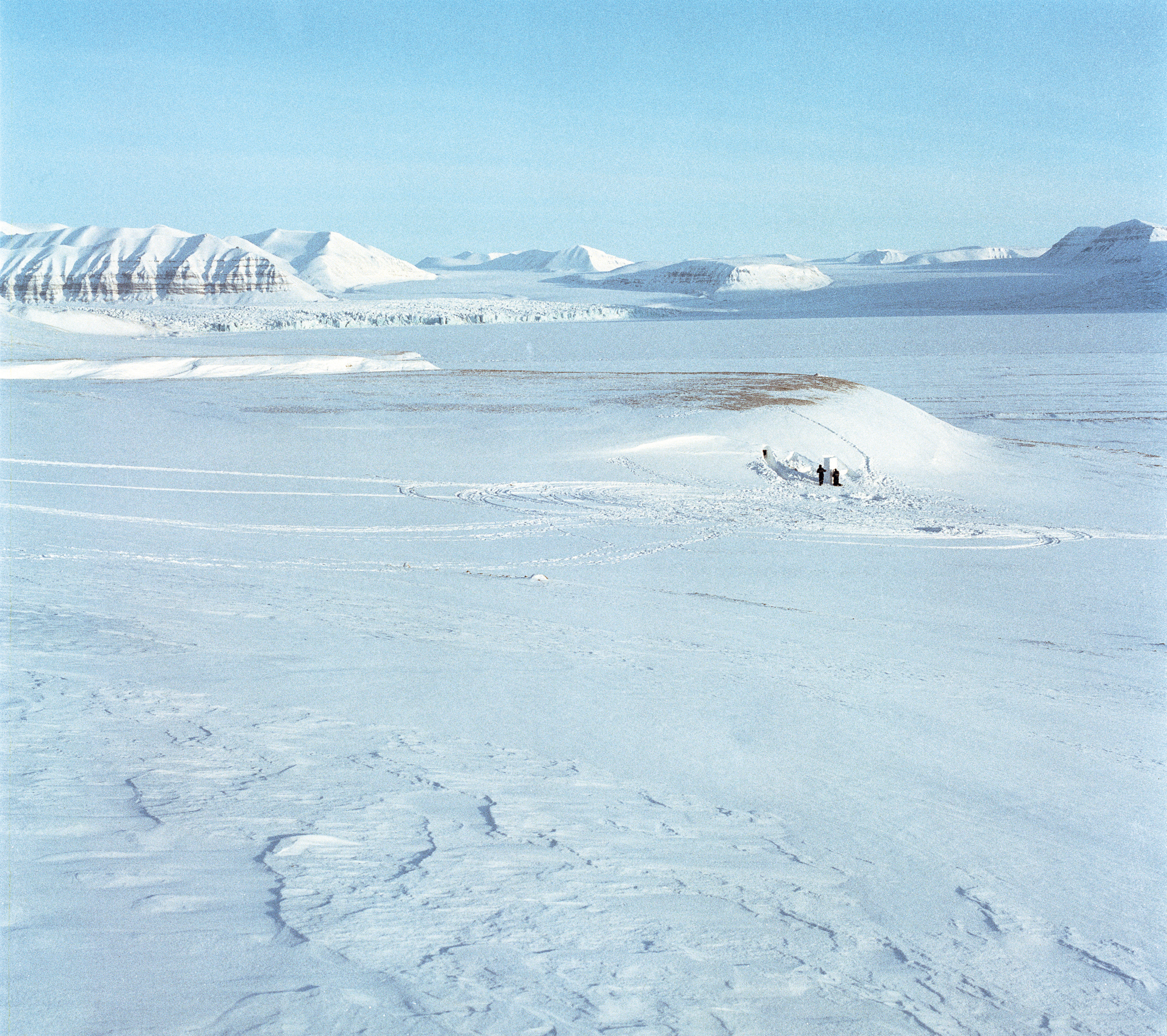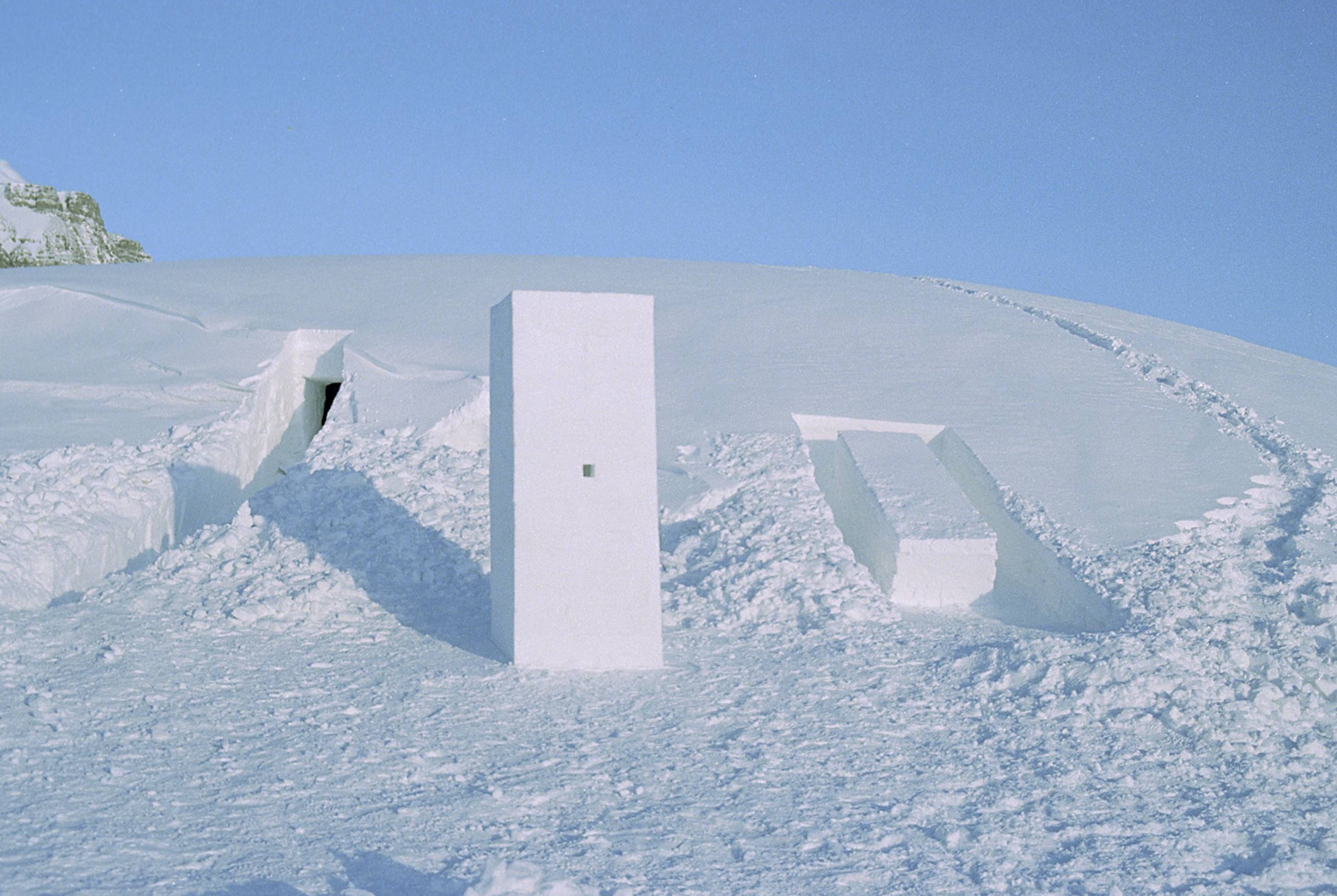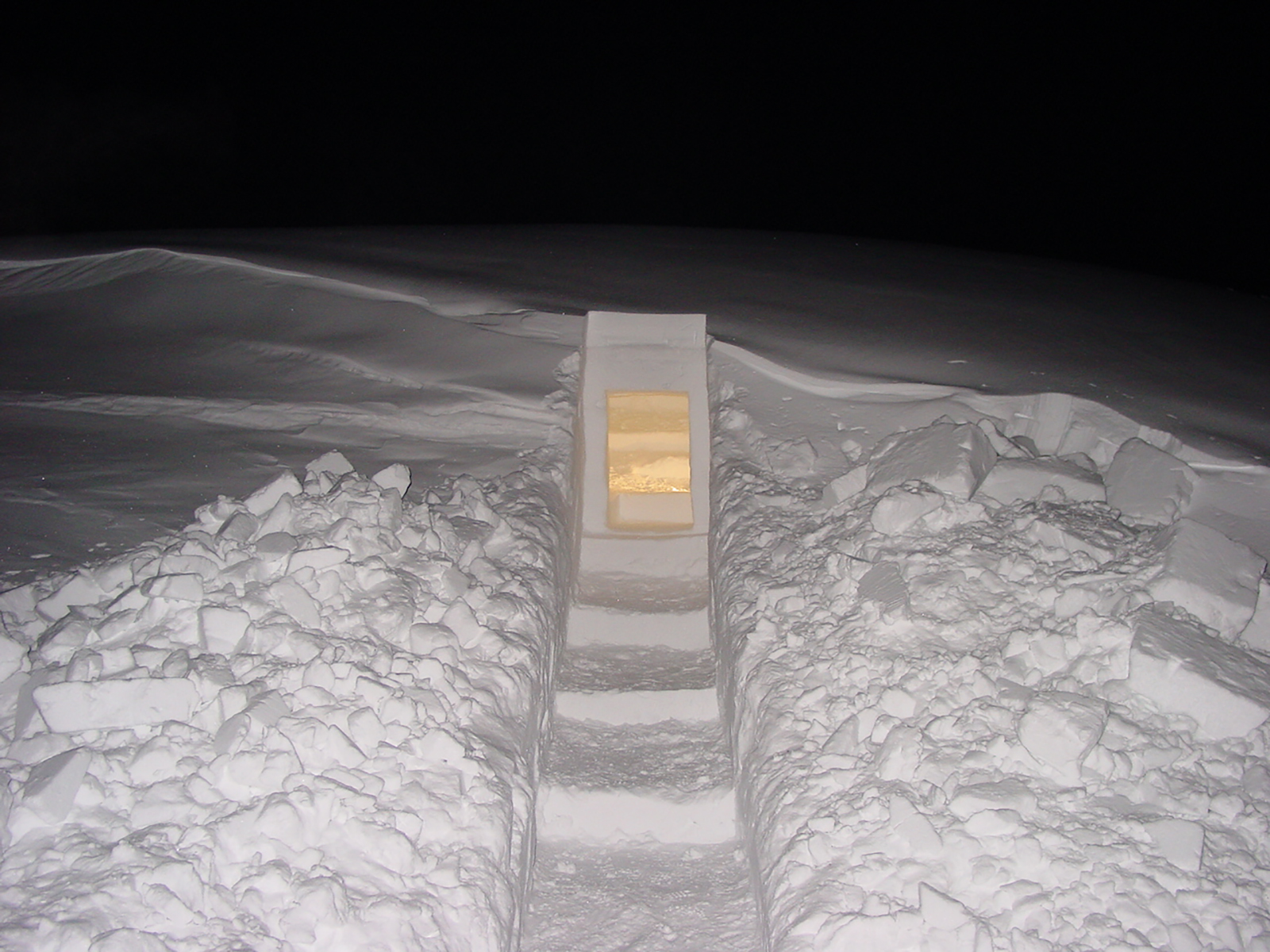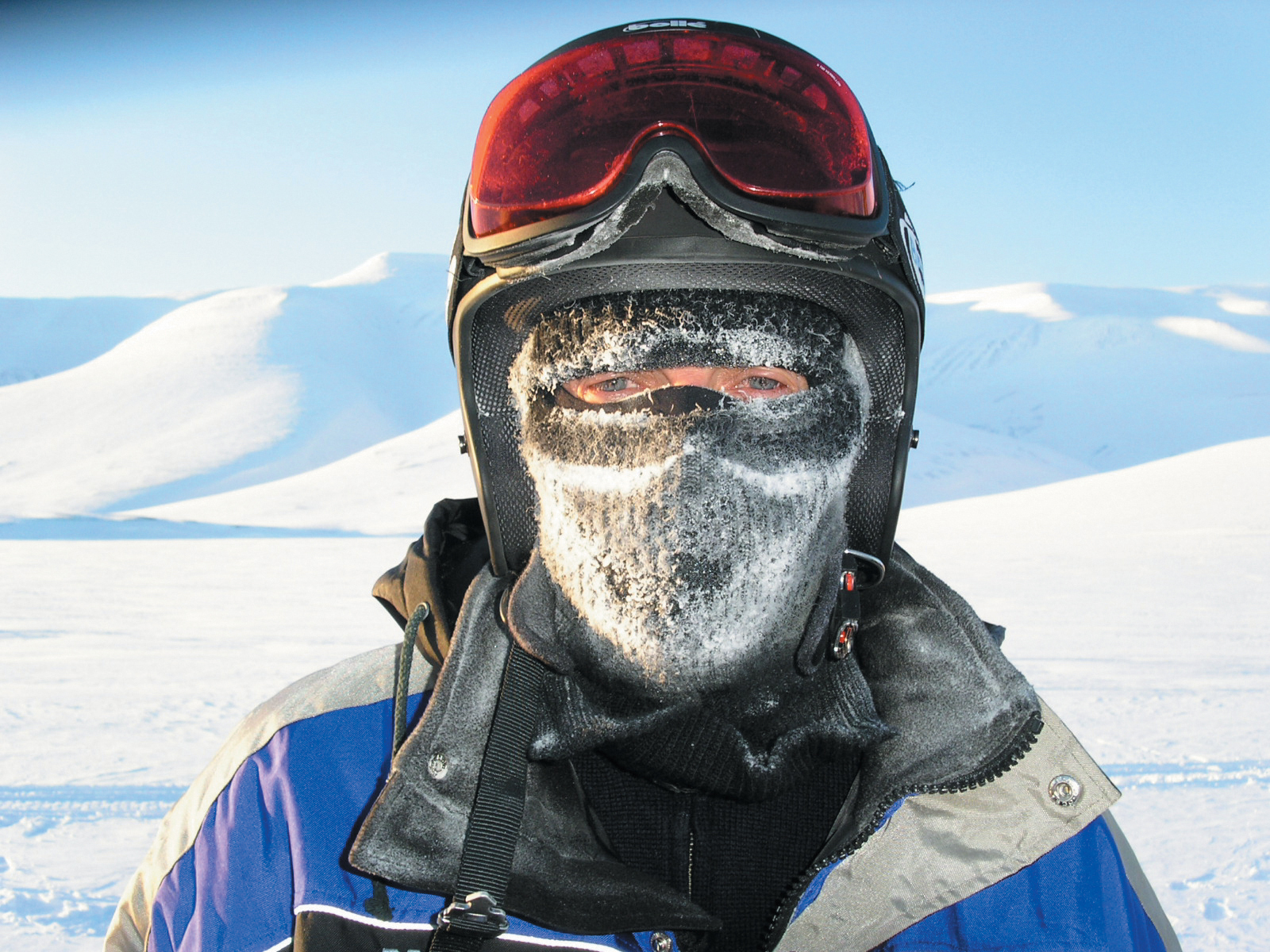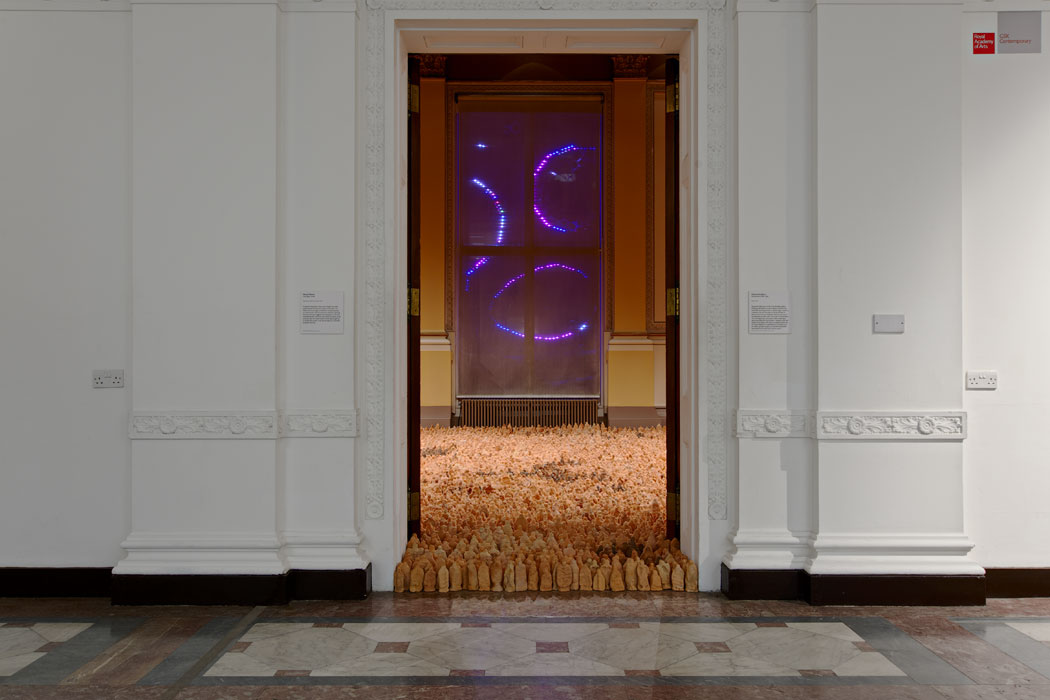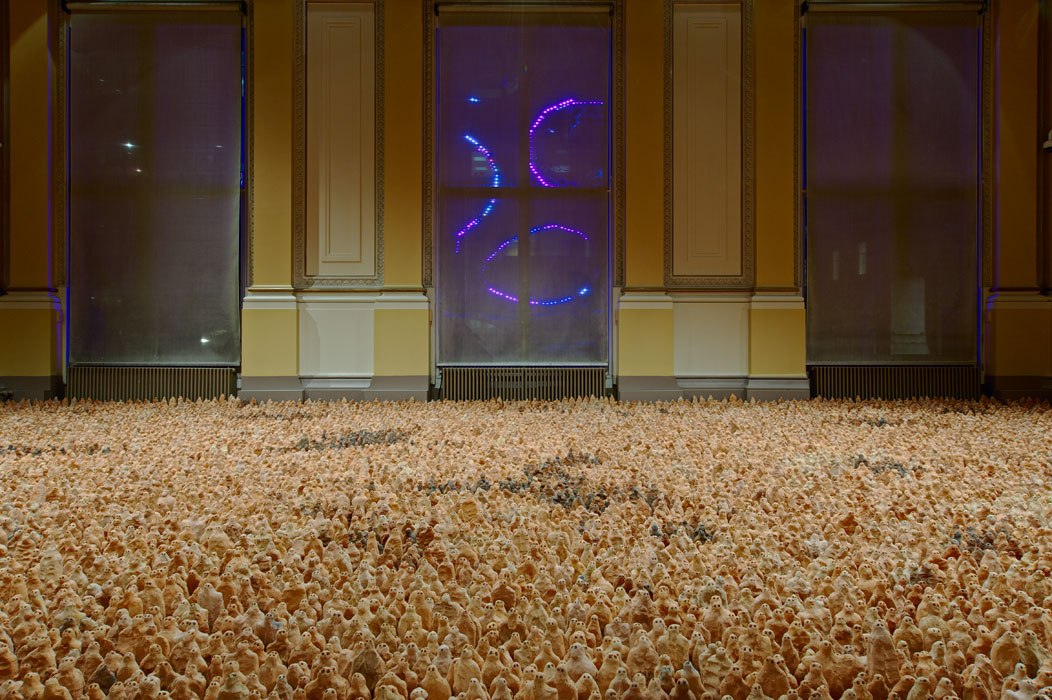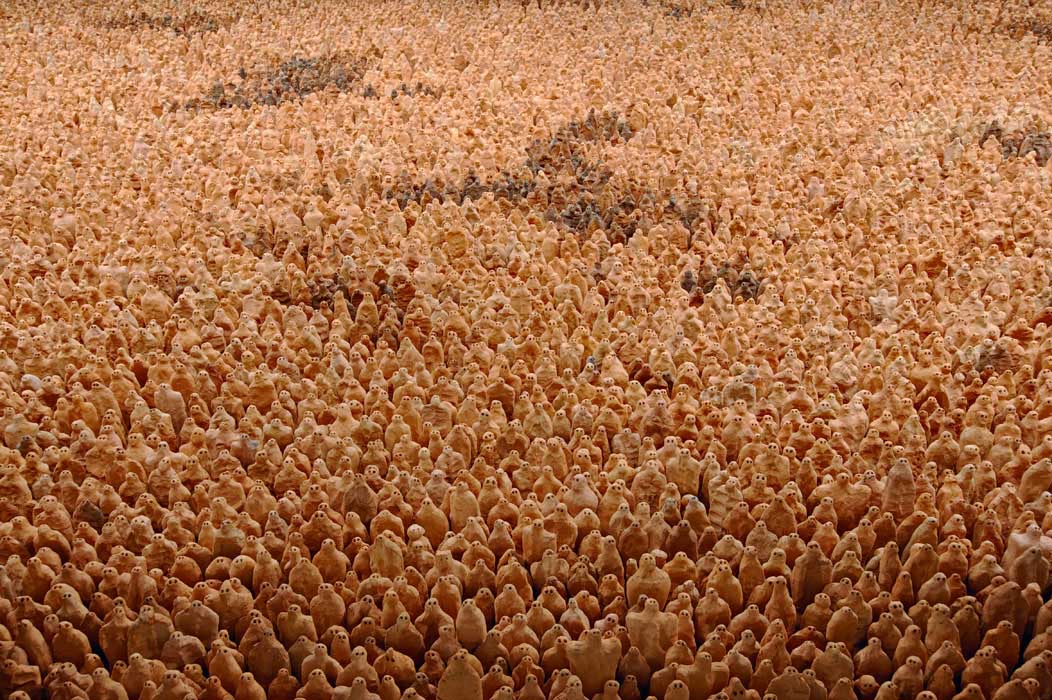Antony Gormley
One of the UK’s most iconic artists, using the human form to explore man’s existence in and relation to the world
Antony Gormley joined Cape Farewell’s 2005 Art/Science expedition, battling temperatures of -30°C to join the Noorderlicht locked in ice at Tempelfjorden, just north of the 79th parallel with a crew of international artists and scientists. Following the voyage he exhibited works in Cape Farewell’s Art & Climate Change exhibition and Earth: art of a changing world at the Royal Academy.
“What a truly wonderful, euphoric visit to the ultimate Thule – difficult to come down – difficult to believe that this was really us up there! I have to say that I found the experience immensely enriching – how it will help to save the planet remains to be seen – human beings have destroyed to survive from the very beginning – and in the end it is hubris to think that it will be us that can either save it or ourselves. Having said that environmental issues are the way to find a meaningful politics of responsibility that are not defined by corporate or nationalist interests and it is a way that the technosphere/biosphere could come together in a meaningful way…”
Antony Gormley on Cape Farewell’s 2005 expedition
Antony Gormley was born in London in 1950. Upon completing a degree in archeology, anthropology and the history of art at Trinity College, Cambridge, he traveled to India, returning to London three years later to study at the Central School of Art, Goldsmiths College and the Slade School of Art.
Over the last 25 years Antony has revitalised the human image in sculpture through a radical investigation of the body as a place of memory and transformation, using his own body as subject, tool and material. Since 1990 he has expanded his concern with the human condition to explore the collective body and the relationship between self and other in large-scale installations like Allotment, Critical Mass, Another Place, Domain Field, Inside Australia and Blind Light.
Antony’s work has been exhibited extensively, with solo shows throughout the UK in venues such as the Whitechapel, Tate and Hayward Galleries, the British Museum and White Cube, and internationally at museums including the Louisiana Museum in Humlebaek, the Corcoran Gallery of Art in Washington DC, the Irish Museum of Modern Art in Dublin, and the Kölnischer Kunstverein in Germany. Blind Light, a major show of his work, was held at the Hayward Gallery from 17 May until 19 August 2007.
He has participated in major group shows such as the Venice Biennale and the Kassel Documenta 8. His Field has toured America, Europe and Asia. Angel of the North and, most recently, Quantum Cloud on the Thames in Greenwich are amongst the most celebrated examples of contemporary British sculpture. One of his key installations, Another Place, is to remain permanently on display at Crosby Beach, Merseyside.
He was awarded the Turner Prize in 1994 and the South Bank Prize for Visual Art in 1999 and was made an Order of the British Empire (OBE) in 1997. In 2007 he was awarded the Bernhard Heiliger Award for Sculpture. He is an Honorary Fellow of the Royal Institute of British Architects, Trinity College, Cambridge and Jesus College, Cambridge, and has been a Royal Academician since 2003.
About the 2005 Art/Science expedition
Earth: art of a changing world
Art & Climate Change exhibition

